|
Downward-Facing Dog or Adho Mukha Svanasana is a posture that’s practiced often in most forms of yoga. In fact, it’s likely that your yoga practice will consist of at least one downward facing dog no matter what style of yoga appeals to you. While this posture is often referred to as a resting posture in Vinyasa Flow yoga, taken as a break between standing postures, it’s an incredibly demanding position that requires your entire body to be engaged, your breath to be active, and your awareness to be fully present. Jessica Magnin’s recent workshop at the Hotel de la Paix in Luang Prabang broke down this complex asana, transforming it part by part. There were a few “aha!” moments in the workshop as participants expressed freedom in the experience of being aligned. We’re sharing these useful tips with you. To begin, downward facing dog is a posture of reflection and a posture of humility. The head hangs below the heart as we reflect upon the experience of our practice. In Vinyasa Flow yoga, we come into adho mukha svanasana in between standing postures on the left and right sides. In downward facing dog, we restore equilibrium, we restore our awareness, and we bring ourselves back to the present as we observe and fully engage all parts of the body once again.
Blog post by Julie (juliehana.com)
0 Comments
 There are good yoga teachers, and then there are great yoga teachers. The good teachers challenge us. Physically, they help us push the limits of our capabilities. Mentally and emotionally, they impart confidence, self-worth and discipline. The great teachers however, touch our souls in a way that causes a vital shift to our inner being, leaving us a little bit transformed. In this lifetime, we will likely only encounter a handful of these great teachers. We may not recognize them upon first meeting them. Most probably, we would not have heard of them before. Teachers like these do not seek fame. Rather, they practice and teach, touching one person at a time, without the need for recognition and without the need to be commended. In the end, it is not their goal either to instill these changes in others. Those who come with an open heart and mind will gain the benefit of their teachings. Those that are closed to it will not. They don’t tell us what we should or should not do or think. They do not judge us for how we live our lives. Most importantly, great teachers grow in us, the desire to be better people, to be selfless people. In a single class, these teachers can make you feel your smallness in the larger scheme of the universe, yet feel so connected to it at the same time; to want to sacrifice your own goals for those of humanity; to feel deeply for all of humanity; to have compassion for all things good and bad; to love and to truly seek peace. To all the inspirational teachers out there, THANK YOU! Blog post by Julie (juliehana.com)  I’ve been practicing yoga for about 10 years now. For the first 8 years, you can say that I was pretty much obsessed with the power Vinyasa style. More recently however, I’ve begun to dabble in various different styles of yoga including, but not limited to Iyengar, Sivananda Hatha Yoga, Jivamukti, Vini Yoga, Yin Yoga and Anusara. Some may say that being involved in the different styles and different philosophies waters down my commitment to each, but I disagree. Students come to my classes from different backgrounds and practices. I want to understand where they come from and what they practice. I love incorporating aspects of the different philosophies into my teachings because I believe there’s truth in all of them. That’s why, when Yuri approached me last week to ask whether he could teach a Kundalini Yoga class, I jumped at the opportunity to again expand my knowledge and understanding of yet another yoga perspective. Of all the yoga styles and philosophies that I’ve encountered, Kundalini Yoga has always peaked my curiosity. It’s quite different from the Hatha and Ashtanga yoga lineage. I’ve also heard the claim that one Kundalini class is something like ten times more effective than other forms of yoga in stimulating change in a person’s life. So yesterday morning, I went to find out for myself. Before I get into the specifics of the practice, I’d like to clear up one minor detail – one that tends to confuse people. As the goal of all yoga practices is the union of the Shiva and Shakti aspects, representing consciousness and creation, which is triggered by the awakening of Kundalini energy, a dormant potential force that lies at the base of the spine, all yoga is essentially Kundalini yoga. However, in this case, I’m referring to the “Kundalini Yoga as taught by Yogi Bhajan,” who brought the practice to the west in the late 1960s. Now, to the practice. We began with a short meditation while repeating the mantra “Ong Namo Guru Dev Namo” to open the heart and empower us through our practice. Then began a series of short repetitive movements accompanied by the “breath of fire,” which is a little bit like controlled hyperventilation. I found the movements to be similar to some of the Vini Yoga movements that I’ve practiced before, but much faster. A simple example of one of these movements is taking your fingers to the shoulders with the elbows lifted to shoulder height. Inhale as you turn the entire torso, head and neck to the left. Exhale as you turn to the right. Now repeat this fast while using the breath of fire for about a minute and a half. Try it. It’s a lot harder than it seems, but somewhere between the burning shoulders, the focus on the area of the third eye and the breath of fire, I felt energy being released inside my body. Okay, maybe it was the light-headedness that resulted from the hyperventilation, but through the movements and breathing and focus, I experienced a complete release of all the tension that I’d been holding on to all week. I shrugged it out through my shoulders, chopped down my obstacles with an invisible sword, released my fears through my breath and let all the worries escape by focusing on the light between my eyes. When it was all done, I laid down in Savasana and let the emptiness sweep over me. I won’t vouch that everyone who attended class yesterday morning felt like this, although I’ll bet there are at least a couple of sore shoulders out there. Do I think I’ll be enlightened ten times faster? I’m not sure, but I do know that this certainly will not be my last Kundalini Yoga class. I’d like to thank Yuri for teaching such a great class! Blog post by Julie (juliehana.com)  Jessica Magnin began her workshop last weekend by asking, “How many people made a new year’s resolution this year?” Out of a room full of 20 people, only four raised their hands. Then came the question, “For those who did not make one, why didn’t you?” The answer, for most, was simple. New year’s resolutions almost always fail. And there you have it, the word “FAIL” or “FAILURE.” Jessica explained that more often than not, the resolutions that we make are coupled with the potential to fail. Furthermore, resolutions such as “I will quit smoking this year” or “I will go to the gym four times a week” are created as a result of what we think we “should” be doing. A dictionary defines “should” as “used to indicate obligation, duty or correctness, typically when criticizing someone’s actions.” Thus in creating many of our resolutions, we’re engaging in a cycle of self-criticism, which leads to failure when the resolution is not fulfilled, which again leads to even more self-criticism.  What if we were to change the way we made our resolutions? According to Jessica, choosing the right words and the right intention is key. So let’s start at the top and instead of “creating a resolution” let’s call it “seeding our intentions.” Right there, we generate an image of new beginnings, of growth and of continuous change. We switch from what our brains think we “should” do to what our hearts feel we “want” to do. In choosing the words of your intention or Sankalpa, keep to larger and more general concepts such as happiness, peace or health rather than specific material desires such as money, career or body weight. Write down a few words or phrases, and then perhaps even a sentence using these words and phrases. When writing the sentence, be sure to begin the sentence with “I have” or “I am” rather than “I want” or “I must” so it becomes something positive that you are already experiencing.  It’s a simple process really, but the result is empowering. Repeat your Sankalpa to yourself three times and let it resonate from the depths of your heart. Feel it taking place already. Take this further by combining a yoga practice focused on back-bending to open the heart and the throat where anahata chakra and vishuddhi chakra are respectively located, manifesting thoughts and speech into reality. With the creation of the proper intention, seeded from the right words and right purpose, feel the connection to your true self or the nature of goodness within yourself that is unaffected by outside factors. Add twisting postures to your practice to illuminate your spine and remember, “the light within you is the same light that illuminates the entire universe.” Thank you Jessica for your teachings and thanks to all the participants who showed up to support the SMILE Project. Blog post by Julie (juliehana.com) In December 2012 Al Jazeera producer and Huffington Post journalist, Bhanu Bhatnagar, completed his yoga teacher training and taught his first yoga class at the practice space in Ban Aphai. In line with the yoga community’s commitment to Karma Yoga, or service, the class was held as a fundraiser for the Traditional Arts and Ethnology Center (TAEC). Proceeds of the class that was held on December 10 went towards supporting TAEC’s mission of preserving cultural diversity in Laos.
Bhanu recently wrote about his first teaching experience in the Huffington Post. The article is a reflection on an experience that most yoga teachers can appreciate. For students, this is a great insight into some of the challenges that your teachers face as they strive to deliver guidance, knowledge and compassion in their classes. Read the Huffington Post article. The following photographs were taken by Casey Conroy. On Tuesday November 27, guest teacher Joanna, who was traveling through Luang Prabang while on honeymoon, taught a morning class at Utopia. Here are the pictures from the class.
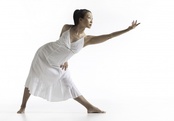 “Jivamukti yoga is a freestyle vinyasa flow that is unapologetically spiritual, with a nice soundtrack to go with it.” These are the words that YuMee Chung, advanced certified Jivamukti yoga teacher, used to describe the practice which she and her husband Scott graciously introduced to a small group of yogis on a recent visit to Luang Prabang. As we learnt, Jivamukti is always practiced to music, and to the delight of our group, we were to be treated to live music, courtesy of Scott and his guitar. Our practice began by singing a contemplative mantra, “So Hum”, which translates to “I am that.” And as YuMee explained, if “I am that,” then “I am not this.” “I am not the clothes that I wear, I am not the color of my skin, I am not the things that I own, I am not my emotions, and so on and so forth.” An invocation to Shiva, the Hindu deity known as “the destroyer” and “the transformer” further inspires the release of that which no longer serves us, encouraging positive transformation. Vinyasa loosely translates to “an intelligent sequencing of postures.” We move from one asana, or yoga posture, to another in an unbroken and intuitive rhythm. In vinyasa flow, the transitions are just as important as the postures themselves. Off the mat, YuMee eloquently reminded us “not to hang out in the Kodak moments in life as the preparations before and the cleanup after are just as sacred.” At certain points during the practice, my focus shifted momentarily to Scott, who flawlessly serenaded us with Bossa Nova, a tune by John Lennon and several other unique numbers that I couldn’t quite identify, but relished all the same. It was joyful and lighthearted. And with YuMee walking around and giving us gentle adjustments and massages with scented oils, I’m sure that I was not the only person melting happily into the Jivamukti experience. To learn more about YuMee Chung and Jivamukti yoga, visit http://padmani.com/ Blog post by Julie (juliehana.com) |
Archives
September 2023
Categories
All
|
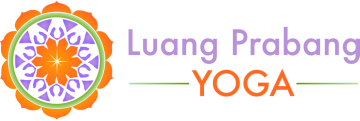









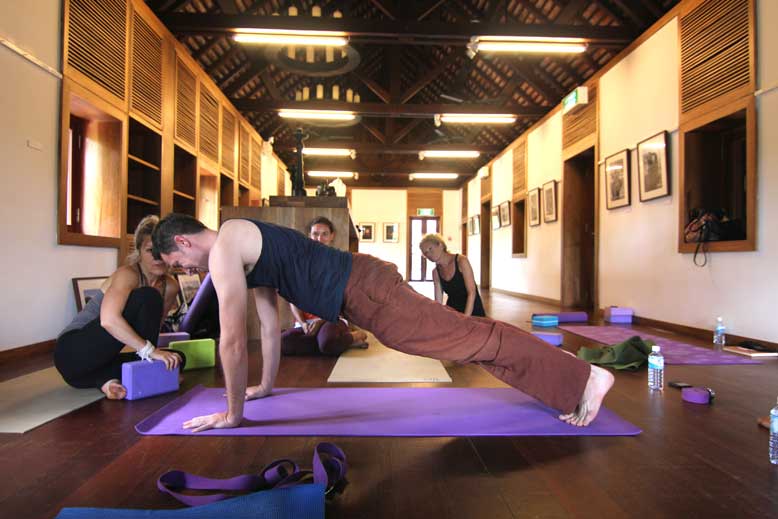


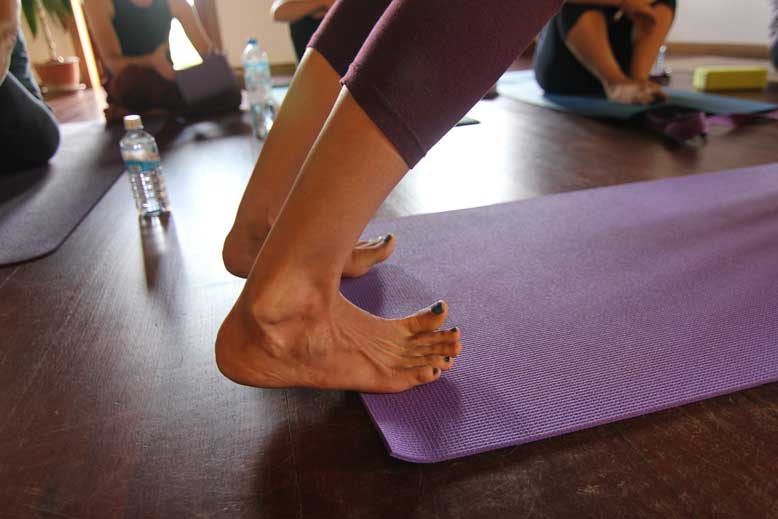

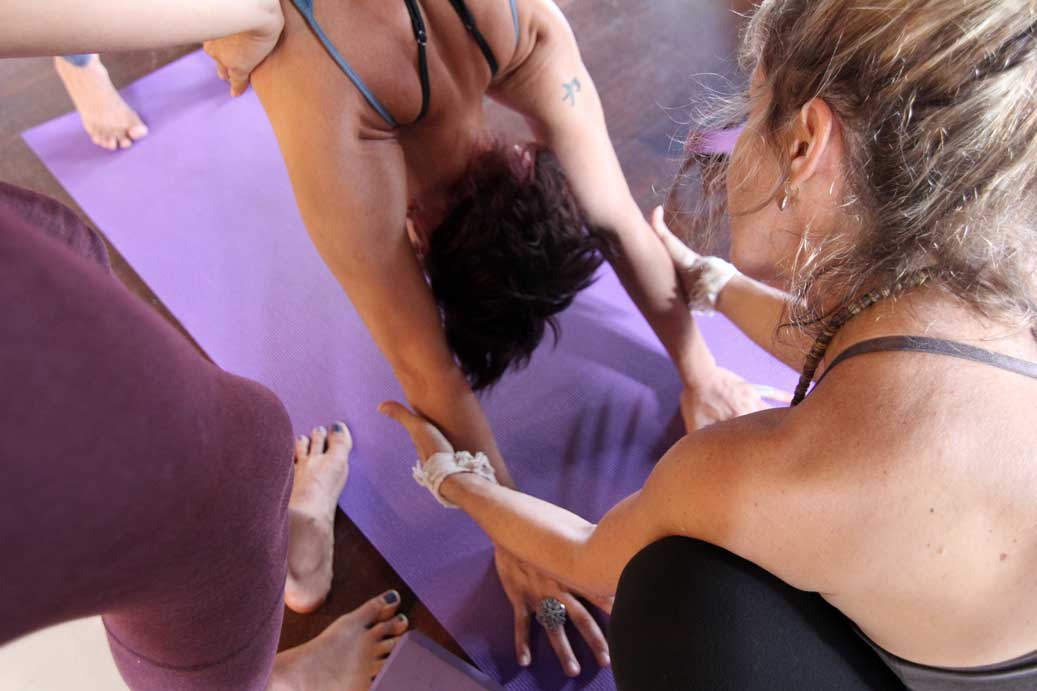




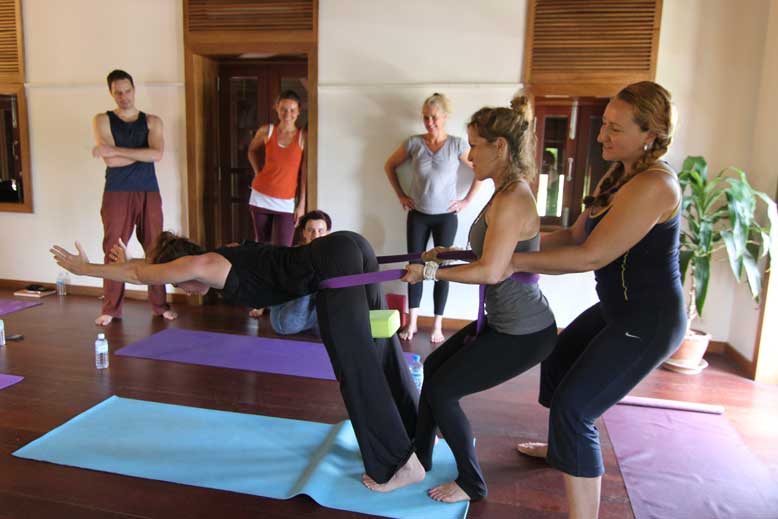

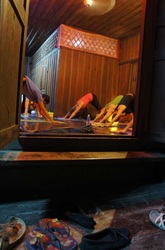


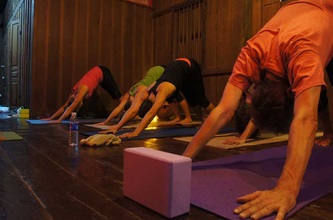



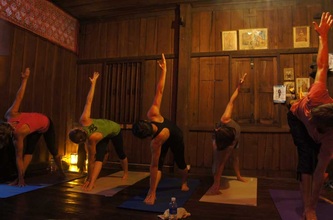





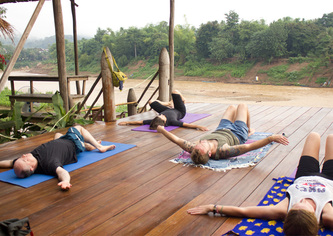

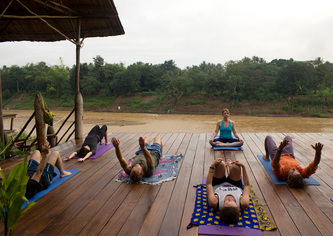

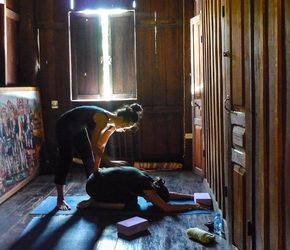

 RSS Feed
RSS Feed
